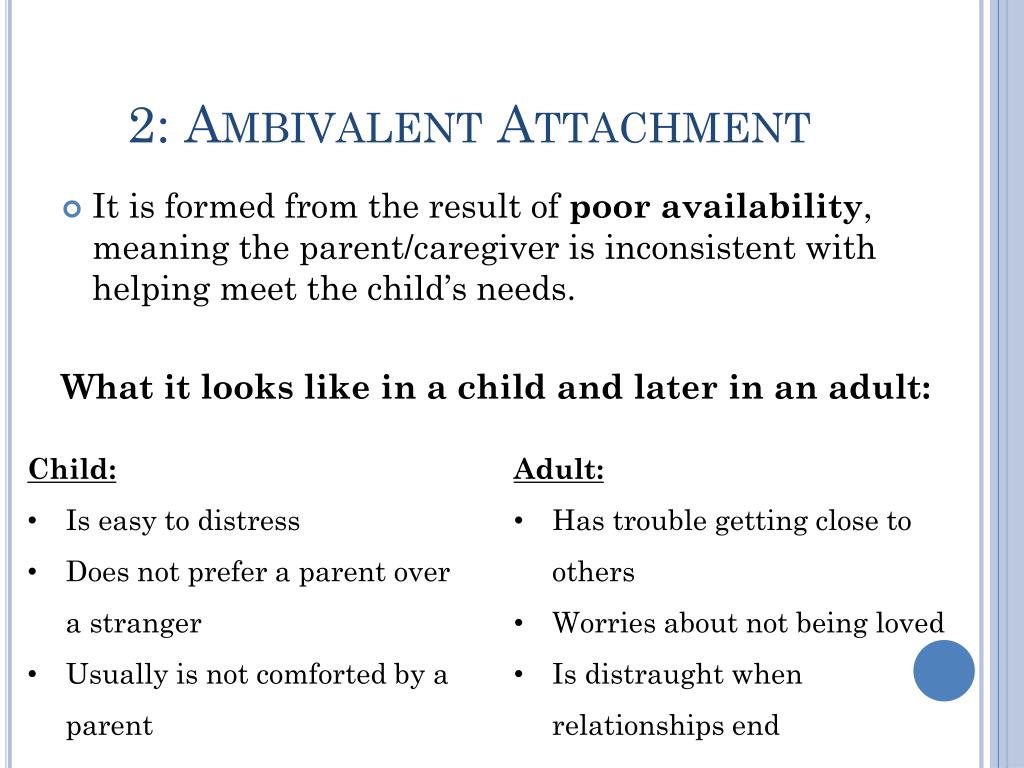
Even if the loss occurs after approximatelyģ–5 years of age, some persistent insecurity in new relationships is to be expected (IASA, 2012).Ĭhildren who have had secure attachments adapt to change more easily than children who have had insecure relationships with From 1 to 3 years, separation is a traumatic loss and a developmental crisis. After 9–12 months of age, there will be distress, with longer-term effects of the change increasing with theĬhild’s age. Transient effects are expected when the first change in placement occurs before 6–9 To break an attachment is distressing, andĬan potentially place a child at risk. Life can have a seriously detrimental effect on social and emotional development.


The breaking of a positive and secure attachment between a child and primary caregiver/s during the early years of the child’s Long-term placements will also have a significant impact on the child’s present and future adjustment. Decisions about maintenance of attachments during temporary and Understanding an infant or young child’s attachment patterns can indicate something of the quality of care he or she has received,Īnd of his or her vulnerability to changes in caregivers. Nurturing, stable and secure environment that will allow for the safe development of more secure attachments. The reasons for reducing these risk factors (all of which may contribute to attachment problems) will be to provide a safe, The requirement for expedition in care proceedings (as stated in s 94(1)Ĭhildren and Young Persons (Care and Protection) Act 1998) is a legislative acknowledgement of the critical importance of early secure attachments for young children. That may result from breaking a child’s attachments. Illness, learning problems, alcohol and other drug dependence, or exposure to domestic violence, against the potential harm The child’s later mental health, including the ability to manage emotions and impulses, socialisation, cognitive and academicĬourts may need to weigh the relative risks of physical, emotional or sexual harm, whether associated with parental mental
#ATTACHMENT ISSUES MEANING HOW TO#
SuchĬonfusing behaviour might be interpreted as signs of disruptive attachment disorders.Īttachment behaviour, or what is learnt about how to elicit a response to a need for caregiving, provides a foundation for They may, for example, withdraw and not seek comfort at all, or may seek comfort from a stranger. These infants and young children, on reunion may show behaviours that appear puzzling, The difficulties with these “normal”Īttachment styles will be complicated in children and infants exposed to high risk environments, where parents are the source A child with an ambivalent attachment style (for whom comforting has been unpredictable) might appear to seek reliefįrom the parent, but resist what soothing is offered, to the point of being inconsolable. A child withĪn avoidant attachment style (who has learnt to expect rejection or punishment when distressed) might pretend to ignore the

To expect comfort when distressed) might cry and want to be picked up, then is comforted and able to settle. Different patterns and degrees of security ofĪttachment to caregivers result from each individual child’s adaptation to the quality of parenting he or she has received.įor example, when the mother has returned after an unexpected separation, a child with a secure attachment (who has learnt

The attachment relationshipĪlso helps an infant or young child learn how to manage unsettling emotions. Children are not born attached to their caregivers,īut learn how to have their needs met by their experience of being parented (Stafford and Zeanah, 2006). Provide a “secure base”, allowing for the safe resolution of an infant’s need for survival from danger, with the need to learnĪttachment behaviours are the means by which infants elicit care and protection. John Bowlby, who originated the theory, proposed that healthy attachment relationships To remove any perceived threat or discomfort. The research literature on child development defines attachment as a relationship pattern between a child and a caregiver.Īttachment behaviour anticipates a response by the attachment figure(s), to tune in to the child’s needs for attention, and


 0 kommentar(er)
0 kommentar(er)
